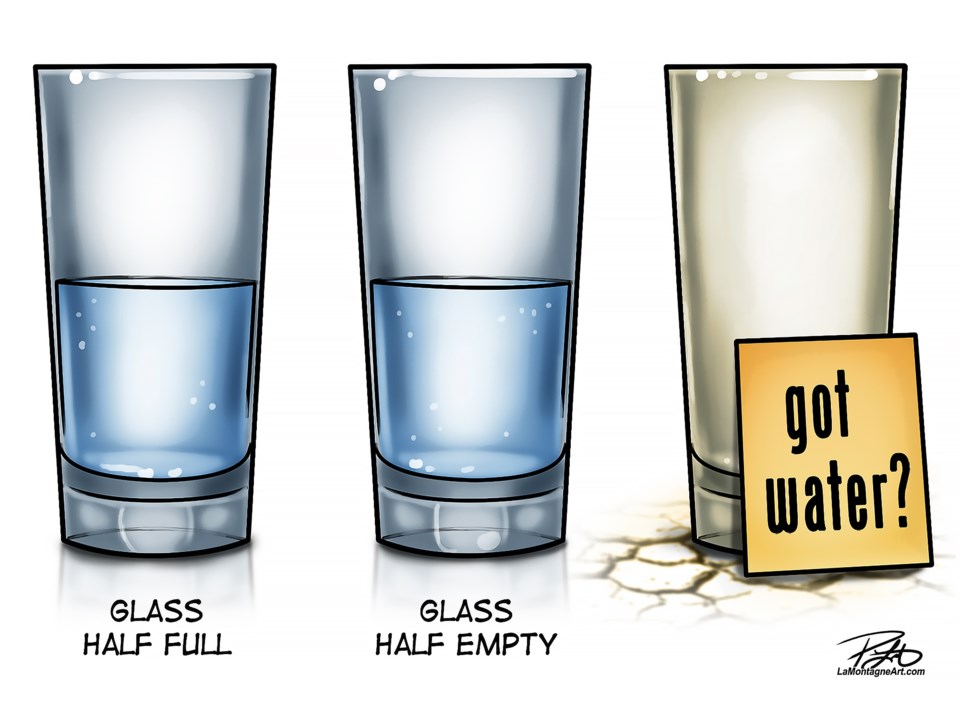The warm winter and anticipation of a brutal drought will likely push both the Bow Valley and province to make key sacrifices in the coming summer.
As realistic concerns on water and supply are brought to the forefront with warming winters due to El Niño this year and the continual impact of climate change, how water is delivered to communities will only become more pressing.
Though not there, the province hasn’t shied away from stating that if needed they will call a state of water emergency, which could have it direct water allocation based on priority.
The last time there was a significant drought was in 2001 and with discussions ongoing with water licence holders in a break glass emergency to possibly reduce the use of water by larger licence holders, the province is preparing for the worst.
The bulk of Alberta’s water licences draws from surface sources, with about 68 per cent going to agricultural, 22 per cent to industrial use and about seven per cent to municipalities, according to data from the province’s flow estimation tool for ungauged watersheds.
Alberta is in Stage 4 of 5 in its water management response plan and as of March 28, there are 51 water shortage advisories in the province.
The 33 snowpack surveys measured by the Ministry of Environment and Protected Areas as of March 11 have 22 below average or much below average and 11 average or above average. However, it marks a somewhat modest improvement after only two were average or above. Key reservoirs in the region, such as Spray Lakes, are well below their capacity and many others are in similar shape.
For the Bow River, its level is the lowest March in the last 24 years, according to the March 6 measurement.
The province has floated several ideas such as reusing water remaining from oilsands mining process and irrigation districts potentially creating an interbasin diversion, which would see water moved from its seven major river basins to the next. Each basin has sub-basins – with the Bow Valley part of the Bow River sub-basin in the South Saskatchewan river basin – though the local basin has the highest natural flow in the region due to the Canadian Rockies' help.
Negotiations are continuing with large water licence holders in the South Saskatchewan river basin and were meant to conclude by the end of March, but pushed back to April 18.
With more than 80 per cent of Alberta’s water coming from the north part of the province and about 80 per cent of demand in the south, it’s directed into municipal, commercial and industrial use, but also irrigation, petroleum and livestock. There are more than 25,000 water licence holders for close to 10 billion cubic metres of water.
In the South Saskatchewan river basin, water licences have halted from being doled out since 2006.
The immediate short-term needs are important, particularly with what looks to be a rough year ahead for water, but the long-term concerns need to be addressed and thoroughly fleshed out so the panic button isn’t being hit come winter.
Alberta, like many in western North America, uses the first-in-time, first-in-right model that largely came out of the North West Irrigation Act in 1894. It means the most senior water holders get their full share of water, potentially leaving newer licence holders out of luck.
An outright system change would be impossible and a legal minefield, but other jurisdictions have tweaked water regulations to have more government oversight and control for potentially catastrophic times when water availability is severely limited.
With the coming years likely to get worse and Alberta’s population only continuing to grow, the province needs to explore all options to ensure there’s not a last-ditch effort to avoid catastrophic water supply in communities.




